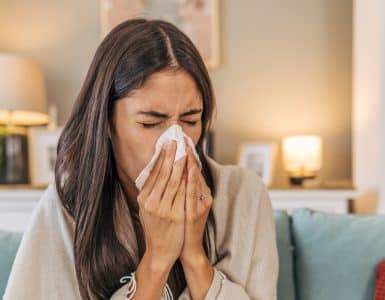Food Allergy Awareness Week–happening May 13 to 19, 2018–is a unique opportunity to help raise awareness of food allergies and anaphylaxis.
Fast facts from Food Allergy Research & Education (FARE):
- What’s a food allergy? A food allergy is a medical condition in which exposure to a food triggers a harmful immune response. The immune response, called an allergic reaction, occurs because the immune system attacks proteins in the food that are normally harmless. The proteins that trigger the reaction are called allergens.
- What are the symptoms? The symptoms of an allergic reaction to food can range from mild (itchy mouth, a few hives) to severe (throat tightening, difficulty breathing). Anaphylaxis is a serious and sudden allergic reaction that can cause death.
- What foods can people be allergic to? More than 170 foods have been reported to cause allergic reactions. Eight major food allergens – milk, egg, peanut, tree nuts, wheat, soy, fish and crustacean shellfish – are responsible for most of the serious food allergies in the United States.
- How many people suffer from food allergies? Researchers estimate that up to 15 million Americans have food allergies, including 5.9 million children under age 18. That’s 1 in 13 children, or roughly two in every classroom.
- Are food allergies on the rise? Yes. The Centers for Disease Control & Prevention reports that the prevalence of food allergy in children increased by 50 percent between 1997 and 2011. Between 1997 and 2008, the prevalence of peanut or tree nut allergy appears to have more than tripled in U.S. children.
- How often do food allergies require emergency care? Every three minutes, a food allergy reaction sends someone to the emergency room. And each year in the U.S., 200,000 people require emergency medical care for allergic reactions to food.
If you suffer from food allergies, you know that it presents a unique set of challenges, especially at mealtimes, when dining out, or attending work or social events. FARE offers the following tips to help you take care of yourself and stay safe and healthy.
- Find out if you’re truly allergic. If you suspect you have an allergy, visit an allergist to get an accurate diagnosis.
- Always be prepared. Make sure you always have your medications on hand, and bring extra if you are traveling or will be far from a hospital. Consider purchasing emergency identification jewelry that lists your allergy on it.
- Become a label-reading expert. Learn to correctly identify problem ingredients when reading labels. Read the ingredient label every time you buy a product in case ingredients have changed. Educate yourself about manufacturing processes and risks of cross-contamination.
- Always keep a supply of safe snacks with you so that you’re never without something safe to eat.
- Learn how to cook and bake at home, and experiment with ingredient substitutions, so that you can make allergen-free foods for yourself.
- If you’re headed to a social gathering, plan ahead by eating beforehand or by bringing your own meal, or a dish to share. (If you’re sharing the dish, take your own portion before serving it to others in order to minimize the risk of cross-contamination.)
- Avoid making food the focus of all your social activities. Work with friends and families to plan outings that don’t always revolve around food.
- Focus on what you can eat, not what you can’t eat. It can be easy to feel depressed by thinking about the foods you can’t have. Instead, find or make the most delicious thing you can have, and enjoy every bite!
- Inform friends and family about your allergy, explaining your needs and answering questions concisely. Help them help you stay safe by educating them about safe ways to make and serve food for you. Let them know how much their support means to you.
Get more helpful tips from FARE by clicking here.
For Health Advocate members
If you’re a Health Advocate member with our advocacy services, call us if you need to locate an allergist, clarify your allergy treatment plan, understand the potential side effects of your allergy medications, and more.



